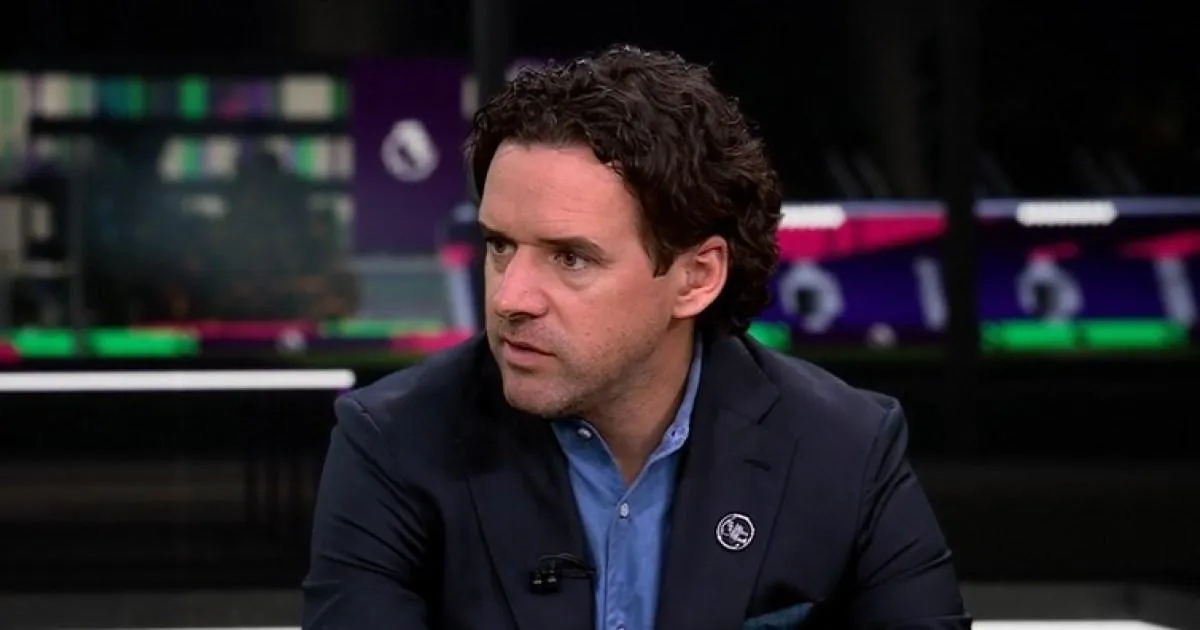News Beat
Owen Hargreaves: Arsenal have the best four players in Premier League in one position | Football


Owen Hargreaves believes Arsenal have the best four full-backs in the Premier League with Jurrien Timber being the standout performer for Mikel Arteta’s side this season.
Arsenal currently sit five points clear of Manchester City at the top of the Premier League and ran out 2-0 winners against Brentford on Wednesday night.
Arteta, however, is facing multiple injury concerns in defence as both William Saliba and Gabriel Magalhaes missed the victory over Brentford, while Cristhian Mosquera was forced off in the first half of that game at the Emirates Stadium.
Ben White impressed on the right side of Arteta’s defence against Brentford, while Riccardo Calafiori’s solid performances on the opposite flank have restricted Myles Lewis-Skelly’s appearances this season.
Hargreaves believes Arsenal’s physicality sets them apart from their title rivals this season and feels the squad depth Arteta has compared to previous campaigns will prove to be the difference.
Get your football fix
Punchy analysis, transfer talk and more from Metro’s football experts sent straight to your inbox – sign up, it’s an open goal.
‘I thought they’ve been looking comfortable all season,’ Hargreaves told Premier League Productions.
‘[Noni] Madueke was amazing, think about these guys who don’t even start all the time then they come in, [Piero] Hincapie, Mosquera, I thought Ben White was terrific as well, they have all these different options.

‘A couple of seasons ago, if [Bukayo] Saka or Declan [Rice] or [Martin] Odegaard are missing, Arsenal struggled. They’re missing their two starting centre-backs, Timber can pop in there and Ben White can play.
‘I mean they probably have the four best full-backs in the country, all playing in one team, and probably the best goalkeeper as well.
‘Then you’ve got Declan, [Martin] Zubimendi has been amazing, Odegaard, [Eberechi] Eze, the list goes on. Obviously when they get Kai Havertz back to go with [Viktor] Gyokeres. They’re the real deal.
‘That [Rice’s injury] would be a worry because Declan virtually plays every game.
‘That’s the biggest difference to this Arsenal team, they can compete in every phase, they’ve got size, they’re all 6’2″, except [Leandro] Trossard, set-pieces they’re good, they’ve got size, they can compete, technically they’re very good and they’ve got finishing.

‘I think Mikel has got all the ingredients for the recipe to go and win the Premier League this year, maybe even the Champions League.’
When asked if Arsenal could struggle in central defence without Saliba, Gabriel or Mosquera against Aston Villa this Saturday, Hargreaves replied: ‘Timber, I think is the best full-back in the Premier League this season, and I’m sure he can pop in there.
‘He maybe not be physically the size of Saliba and Gabriel but he’s got proper personality, he’s as strong as anything, and obviously Ben White can play in there.
‘They’ve got all these options, I think Mikel so far has done a brilliant job of picking what they need in the game. I think Mikel will be quietly confident wherever they go with what they have at the moment.’
For more stories like this, check our sport page.
Follow Metro Sport for the latest news on
Facebook, Twitter and Instagram.
MORE: Ruben Amorim explains Kobbie Mainoo snub after Manchester United draw vs West Ham
MORE: Roy Keane labels Man Utd star a ‘schoolboy’ with no ‘presence’ after West Ham draw
MORE: Matthijs de Ligt injury latest as defender misses Manchester United vs West Ham









